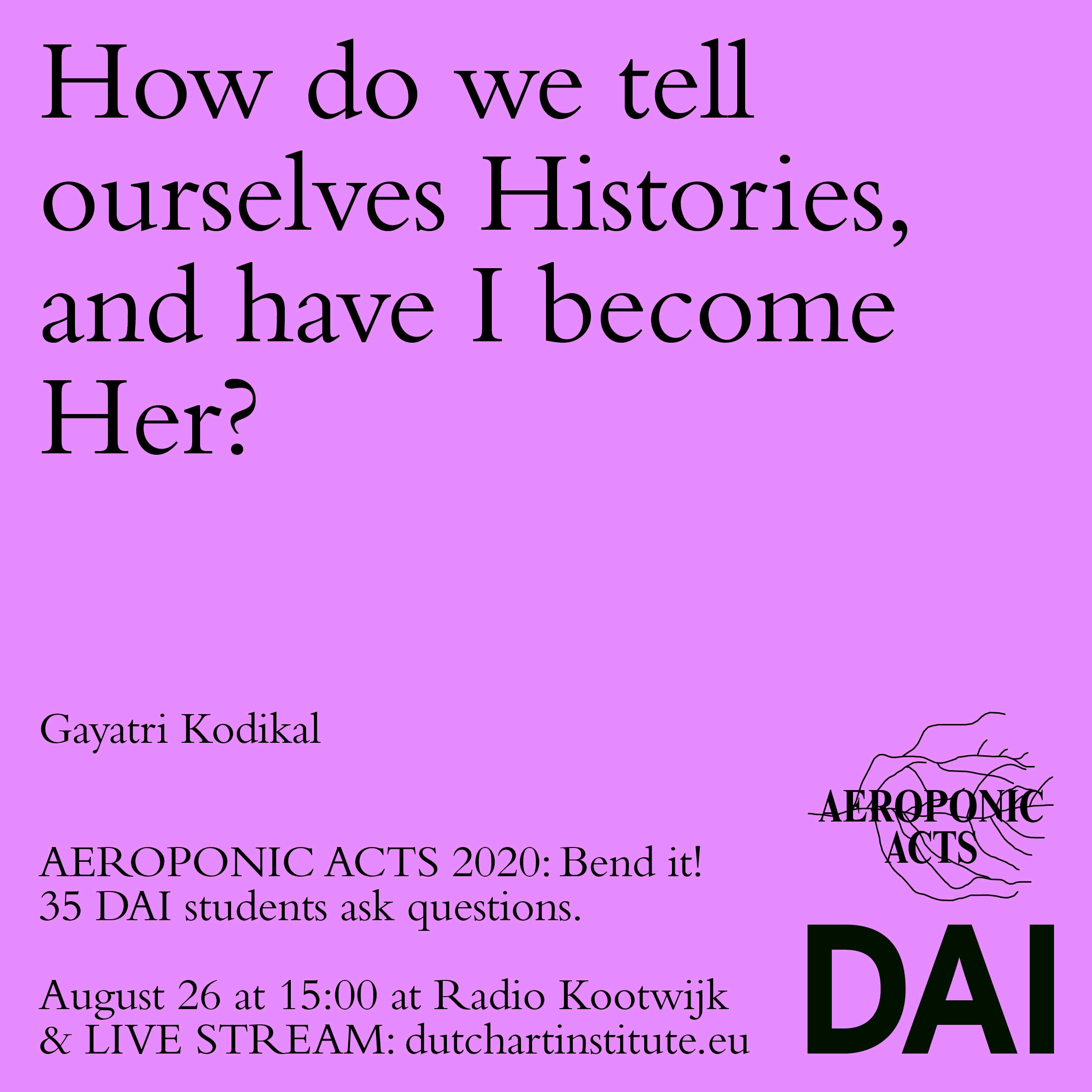Gayatri Kodikal: The Travelling Hand: Palimpsests under moonlit mangroves.
‘Aeroponic’ – root systems nourished by air – Acts is the name given to the nomadic Dutch Art Institute’s final Kitchen presentations. Each participant addresses one question.
Here you will find the documentation of Gayatri Kodika's presentation as filmed by Baha Görkem Yalım. The written report is by Bethany Crawford and it includes a summary of the comments by esteemed guest respondents.
The Travelling Hand: Palimpsests under moonlit mangroves.
Gayatri's Introduction: The Traveling Hand is an ongoing enquiry through game making about my encounter with an archaeological artefact at an excavation site in Old Goa, India; a 17th century Georgian queen's dismembered hand, a fragile decaying fragment that produces its own subjective intentionality. It is about a haunting, an interplay of obsession and possession.
Bethany's report: There is a table with a board game set up on it with a TV. A camera live streams the gameplay and moving-image component onto large screens at the back of the space. Kodikal introduces the elements of the gameplay, the time temple, the mangroves and the molecular recordings and says the ‘players are in a shape shifting game world’. As the two players begin, she relays a true story central to the game, about the ghost of the Georgian queen whose hand was found in Old Goa. Kodikal offers personal anecdotes of how she came to discover this story and her attempts to mimic and displace the tools of archaeology, interweaving the histories and mythologies that the game journey traces. Her obsession begins as the possession of the story and character, troubling her subjectivity. As the players move through the game they activate the molecular recordings, which need to be decoded to unlock the clues to the artefacts and moving-image work stored within them. The trajectory of the game players follows the investigation into a secret fresco, that later extends into a document of Georgian history and the government’s control of the archives related to the story of the queen’s hand. Through the game form and content, the artist questions how historical narratives are established. The game enacts a rhizomatic archival practice, asking what elements of history are made visible and kept secret, and how we can expose these archaeological practices.
Ana Teixeira Pinto thought of an artist friend who staged an exhibition around the hand of Saint Theresa and how a member of the church was sleeping with this dead woman’s hand. She wondered about this morbid obsession with female hands and fingers in the Catholic Church. In psychoanalysis, missing limbs are seen as templates for castration so maybe it has something to do with that, she said. She found it interesting to be presented with another story of a dead woman martyr’s hand and to see the role of the church in the foundations of empire, providing similar examples of colonialism and resource extraction in Portugal and the UK.
Adam Szymczyk thought the objects formed a sort of game and map as a hybrid text, like an early sailor’s collection of samples for trade. He wanted to bring out a travelogue or a guidebook in relation to the long tradition of the ‘periplus’, from the Greek word periplouse, which relates to a manuscript from the Greco-Roman area. The periplus for the Arabian sea stretches between Africa and India, documenting a journey by an unknown made by a sailor/merchant/geographer showing how this merchant ends up in India via the coast of Africa and discovers things like frankincense and diamonds that get extracted by the Portuguese 1500 years later. He wondered if the queen actually existed or was apocryphal, admiring the work’s entry into these explorations and its precise description of geopolitical transcultural and political influence still sustained through institutions’ archaeological pursuits.
Amit S. Rai found it an exquisite assemblage of many histories. In reference to Gayatri Chakravorty Spivak’s ‘Can the Subaltern Speak?’ (1983), he said that the queen is the subaltern and cannot speak. He noted that the artist staged all this through its multi-mediation, and that there’s no abject access to this history as a comment on its colonial obscuration. In considering how to excavate a site that has papered over the violence of colonialism, he found the work highlighted the extreme difficulties of recovering the voice for the subaltern. It’s important to think about the mangroves, he said, as a liminal space between water and land. He congratulated her on an amazing work that poses these complex questions brilliantly.
Gayatri Kodikal's AEROPONIC ACT The Travelling Hand: Palimpsests under moonlit mangroves. was presented at Radio Kootwijk.
Find the overview of all 35 AEROPONIC ACTS 2020 here: BEND IT!
About Gayatri Kodikal

